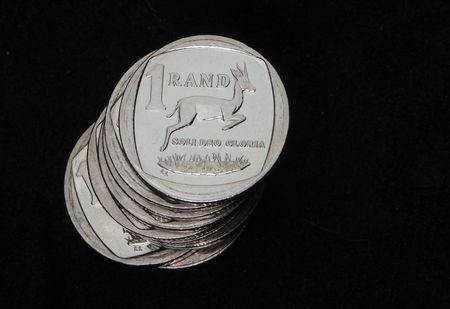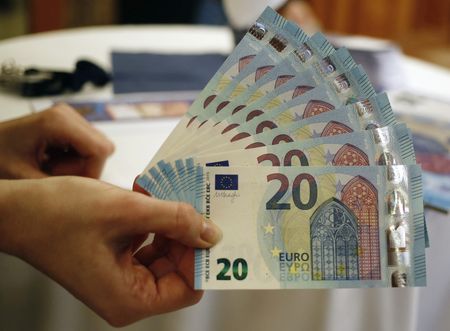By Rae Wee and Greta Rosen Fondahn
SINGAPORE/GDANSK (Reuters) – The euro steadied on Monday after a brief rally following the election victory of Germany’s conservatives as attention turned to how long coalition talks will take.
The dollar edged up from a two-month low amid worries over the growth outlook for the U.S economy.
Friedrich Merz was set to become Germany’s next chancellor after his party emerged victorious in Sunday’s election as expected, though he faces complex and lengthy coalition negotiations after the far-right Alternative for Germany (AfD) surged to a historic second place in a fractured vote.
The euro touched a one-month high of $1.0528 in Asian trade, but then gradually pared the gains and was last up 0.03% at $1.04635.
“Because the German election didn’t provide too many surprises, it’s not that surprising that euro/dollar is trading back to the levels it was trading in on Friday afternoon,” said Jane Foley, head of FX strategy at Rabobank.
The common currency was up 0.4% against the Japanese yen at 156.65 yen, and slightly down against the pound with one euro at 82.80 pence.
Investors are now focused on how quickly Merz’s party can form a coalition government and enact reforms to help revive a stagnant economy.
“The period of coalition talks starts now and we could see some residual euro sensitivity to the topic, especially for everything concerning the debt rule,” said Francesco Pesole, forex strategist at ING.
Markets are watching to see if Germany will loosen its constitutionally enshrined ‘debt brake’ rule that limits the budget deficit to just 0.35% of national output.
The issue has become more pressing amid the threat of U.S. tariffs that could further harm the German economy and given the Trump administration’s demands that NATO’s European members, including Germany, spend much more on defence.
Merz on Sunday vowed to help give Europe “real independence” from the U.S.
“How Merz handles himself, not just as a leader of Germany, but as a leader of Europe’s largest economy and as a leader within Europe, it could be quite instrumental with setting the tone for the euro over the next few months,” said Rabobank’s Jane Foley.
U.S. GROWTH CONCERNS
In the broader market, the dollar touched its lowest in more than two months before steadying ahead of a busy week packed with U.S. economic data and speeches from various Federal Reserve officials. [US/WTOW]
Sterling pushed to a two-month high of $1.2690 due to the weaker greenback. It was last broadly unchanged at $1.2636.
The yen similarly peaked at 148.85 per dollar, its strongest level since early December, but the Japanese currency was last 0.3% weaker at 149.745 per dollar.
Against a basket of currencies, the dollar was last at 106.67, after touching a more than two-month low of 106.12.
The greenback has slid more than 3% from its January peak as traders reasoned the start of Donald Trump’s second term has been mostly bluster on tariffs, leaving little appetite for them to load up on fresh dollar holdings.
Data on Friday showed U.S. business activity nearly stalled in February – the latest in a string of surveys to suggest that businesses and consumers were becoming increasingly rattled by the Trump administration’s policies.
Later this week, investors will get the second estimate of fourth quarter growth figures in the U.S. and January’s core PCE price index data.
“It’s a week where the market could feasibly respond to any economic data point,” said Chris Weston, head of research at Pepperstone.
“With U.S. growth concerns building traction, the market’s reaction function is now heavily skewed to any downside in the data outcomes.”
(Reporting by Rae Wee and Greta Rosen Fondahn; Editing by Jacqueline Wong, Gareth Jones and Susan Fenton)









